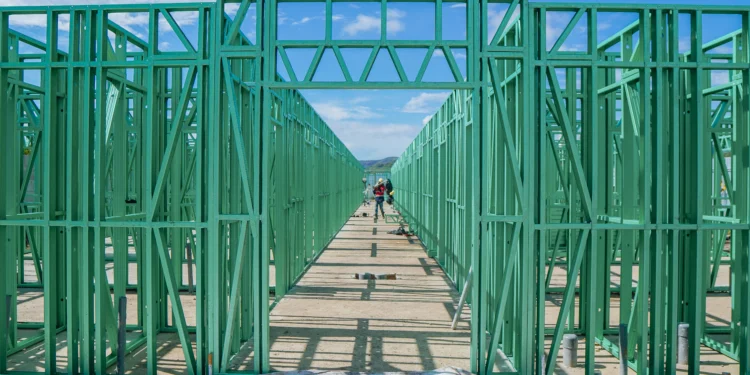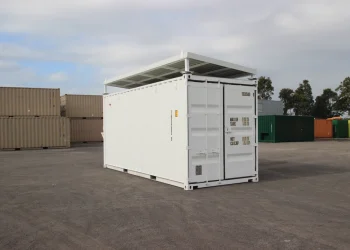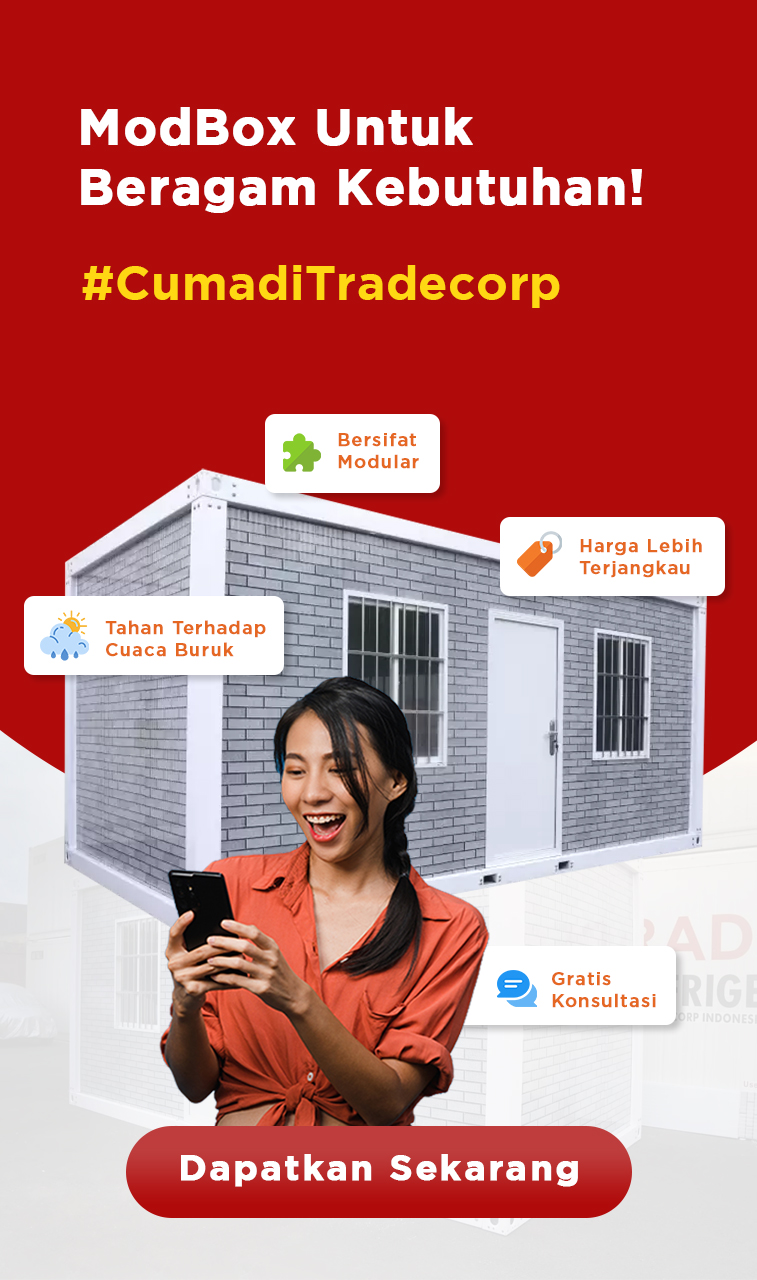Steel stud framing, also known as metal stud framing, is a building construction component that uses cold-formed steel to frame walls, partitions, and ceilings. Popular in commercial, industrial, and residential projects, steel studs excel in resistance to fire, moisture, pests, and rot.
These advantages make steel stud framing a more durable alternative to wood. Though the cost is slightly higher, steel studs offer enhanced durability and safety. With easy installation, steel stud framing is available in two types: heavy gauge for load-bearing walls and light gauge for interior walls. The U and C stud shapes ensure a strong and stable steel structure.
The Advantages of Steel Stud Framing Compared to Wood Framing
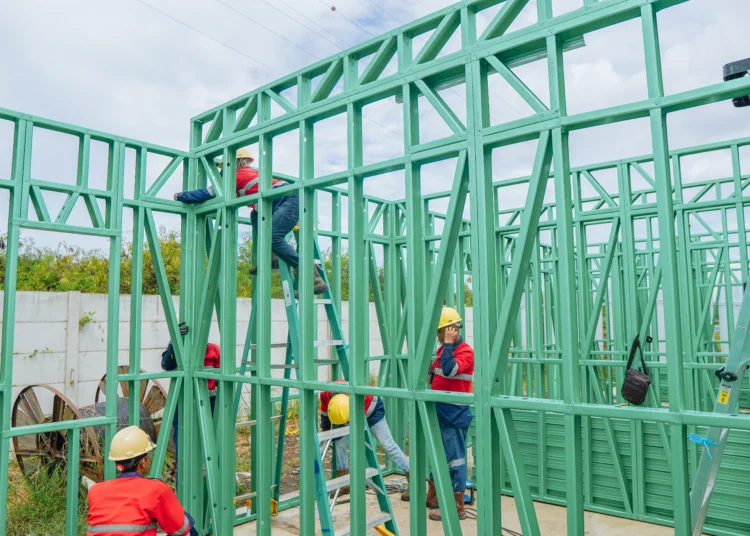
1. Resistance to Moisture
Steel stud framing offers significantly better resistance to moisture compared to wood framing. While wood can warp or rot when exposed to prolonged moisture, steel remains intact and unaffected. This makes steel stud framing a more durable choice, especially for construction projects in areas with high humidity or extreme weather conditions.
2. Fire Resistance and Non-Combustibility
Steel naturally resists fire and is non-combustible, providing superior protection against fire hazards. This is crucial for commercial buildings and fire-prone areas. Steel stud framing ensures that the structural integrity of buildings is more likely to be preserved during a fire, potentially lowering insurance premiums for building owners.
3. Strength and Stability for High-Rise Buildings
Steel stud framing is ideal for supporting high-rise buildings due to its remarkable strength and stability. Steel can bear heavier loads without adding excess weight to the structure, making it more suitable for large and tall buildings like office towers, unlike wood framing, which is typically limited to low-rise structures.
4. Portability and Ease of Installation
The C- and U-shaped steel studs feature hollow centers, making them lightweight and easy to transport. Their interlocking design simplifies both storage and installation on-site. With its lighter weight compared to other materials, steel stud framing speeds up the construction process, saving time and reducing labor costs.
5. Durability Against Harsh Weather
Steel is resistant to a wide range of weather conditions and is not easily damaged by strong winds or extreme temperatures. In contrast, wood is susceptible to environmental damage. Steel stud framing ensures that buildings maintain their strength and stability for the long term, even in areas with severe climates.
The Best Option for Mining Camp and Site Office
The Types of Steel Stud Framing
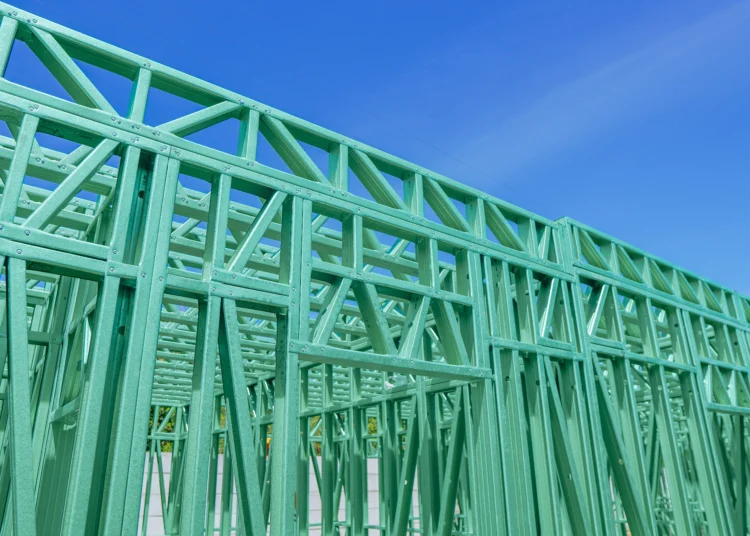
Steel stud framing offers a variety of options suitable for both commercial and residential building walls, providing durable and low-maintenance solutions.
These steel stud types help create a strong wall framework that is resistant to fire, pests, and moisture. Generally, there are two main types of steel stud framing commonly used: hot-rolled steel (HRS) and cold-formed steel (CFS).
1. Hot-Rolled Steel Studs (HRS)
Hot-rolled steel studs are made by heating the steel to its melting point and then shaping it using rollers to achieve the desired form. These steel studs come in various shapes, sizes, and thicknesses, making them a versatile choice for different construction needs.
One of the advantages of hot-rolled steel is that it is typically less expensive than cold-formed steel, making it ideal for projects that prioritize cost efficiency.
2. Cold-Formed Steel Studs (CFS)
Cold-formed steel studs are produced through a similar process to hot-rolled steel but involve shaping the steel at lower temperatures, which enhances its strength and durability.
The main advantage of cold-formed steel is its greater strength due to the additional forming process, making it an ideal choice for walls that require high durability and long-term stability.
The Best Option for Mining Camp and Site Office
Why Does Tradecorp Use LGS for Building Construction?
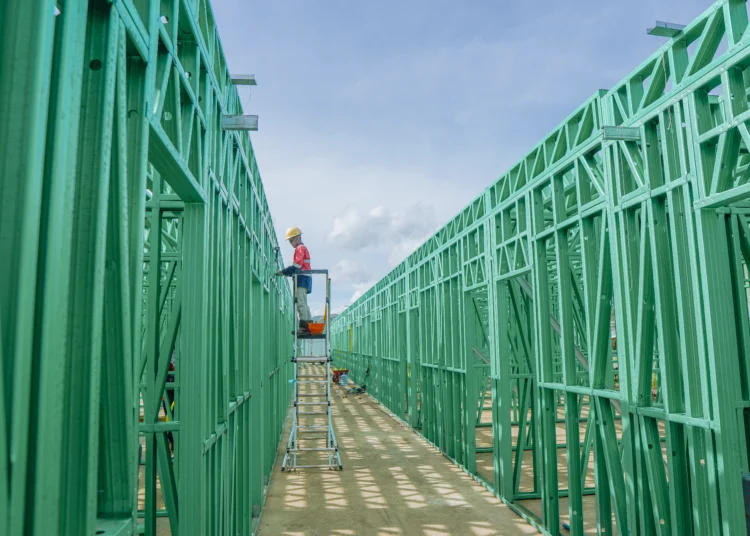
Tradecorp chooses Light Gauge Steel (LGS) or lightweight steel as an efficient, durable, and environmentally friendly construction solution. The use of LGS in construction projects offers several significant advantages, including:
1. Guaranteed Quality
Tradecorp ensures that the LGS materials used meet both national and international standards. With strict quality control, every component of lightweight steel is highly precise and consistently strong. This provides an advantage over wood, which often has natural variations in strength and quality.
2. Long-Lasting Durability
LGS is designed to be durable and resistant to damage from extreme weather, moisture, and pests like termites. This lightweight steel is also more resistant to corrosion, making it an ideal choice for humid environments or areas with harsh weather conditions.
3. Fire and Natural Disaster Safety
With a high melting point, LGS is non-combustible, offering better protection against fire risks. This lightweight steel also remains stable under high pressure, making it ideal for construction in disaster-prone areas such as earthquake zones.
4. Environmentally Friendly and Recyclable
LGS material is fully recyclable without losing quality, supporting waste reduction and sustainability. Tradecorp uses environmentally friendly LGS steel to contribute to greener building practices.
5. Light Weight and Ease of Assembly
Lightweight steel has a lower weight compared to other materials, making it easier to transport and install. With prefabricated, pre-marked components, the installation process is faster, saving time and costs while reducing the risk of errors.
6. Flexible Design for Various Needs
LGS supports design flexibility, allowing buildings with complex shapes and sizes. This lightweight steel can be combined with other structural systems, giving architects more freedom to create unique designs.
7. Faster Construction Process
Construction with LGS is quicker because prefabricated steel components can be immediately installed on-site. This reduces the need for additional labor and speeds up the project without sacrificing quality.
8. High Strength and Stability
LGS has higher structural strength compared to materials like wood or concrete, allowing it to withstand heavy loads and high pressure. This ensures that the construction remains strong and durable, even under extreme conditions.
9. Protection from Temperature and Noise
Tradecorp enhances LGS-based construction with thermal barriers and acoustic insulation to improve energy efficiency and reduce noise. This increases comfort for the building’s occupants.
10. Better Workplace Safety
With prefabricated components and a more structured installation process, using LGS reduces the risk of workplace accidents. The controlled installation process creates a safer working environment for construction workers.


